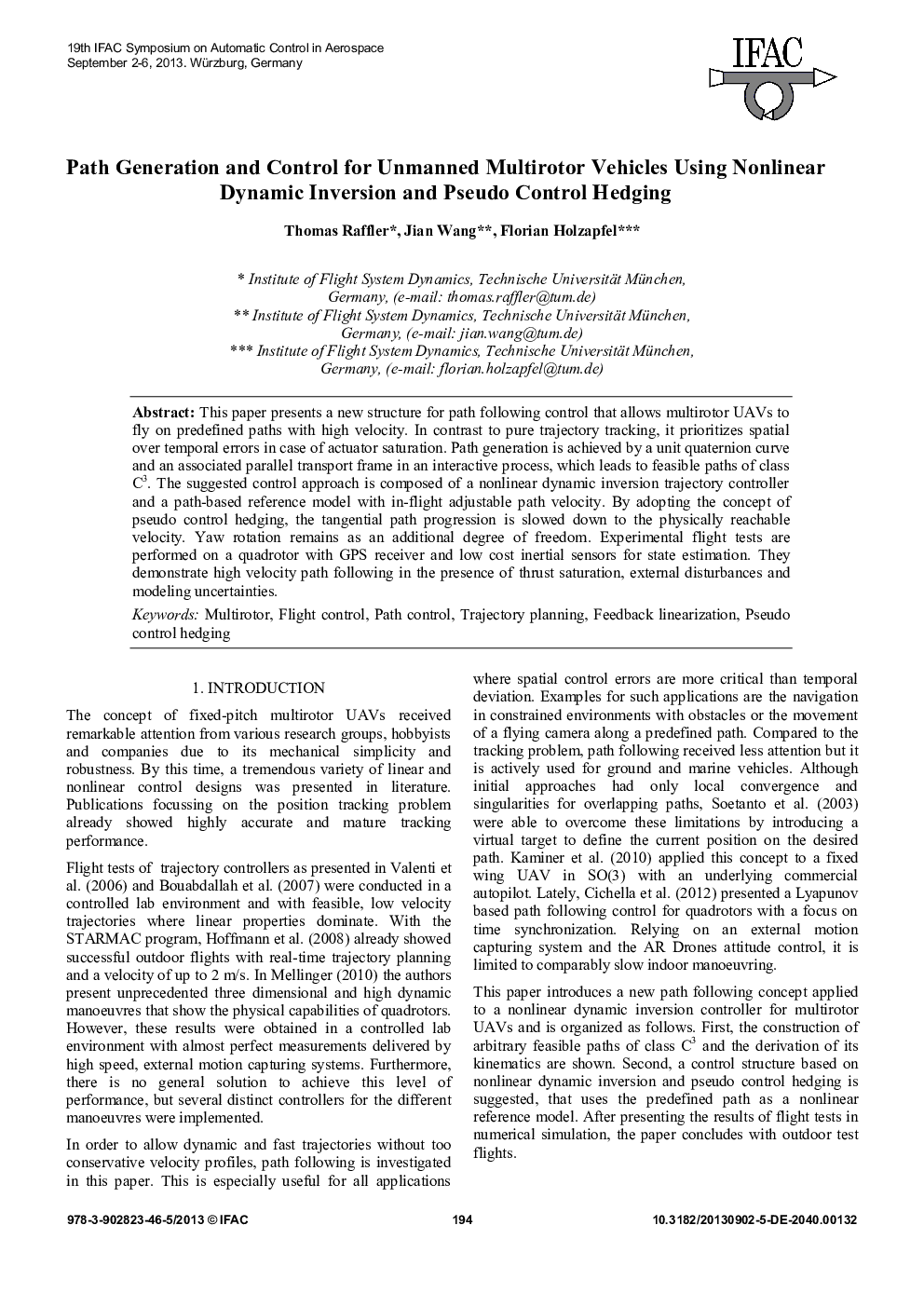| Article ID | Journal | Published Year | Pages | File Type |
|---|---|---|---|---|
| 709159 | IFAC Proceedings Volumes | 2013 | 6 Pages |
This paper presents a new structure for path following control that allows multirotor UAVs to fly on predefined paths with high velocity. In contrast to pure trajectory tracking, it prioritizes spatial over temporal errors in case of actuator saturation. Path generation is achieved by a unit quaternion curve and an associated parallel transport frame in an interactive process, which leads to feasible paths of class C3. The suggested control approach is composed of a nonlinear dynamic inversion trajectory controller and a path-based reference model with in-flight adjustable path velocity. By adopting the concept of pseudo control hedging, the tangential path progression is slowed down to the physically reachable velocity. Yaw rotation remains as an additional degree of freedom. Experimental flight tests are performed on a quadrotor with GPS receiver and low cost inertial sensors for state estimation. They demonstrate high velocity path following in the presence of thrust saturation, external disturbances and modeling uncertainties.
